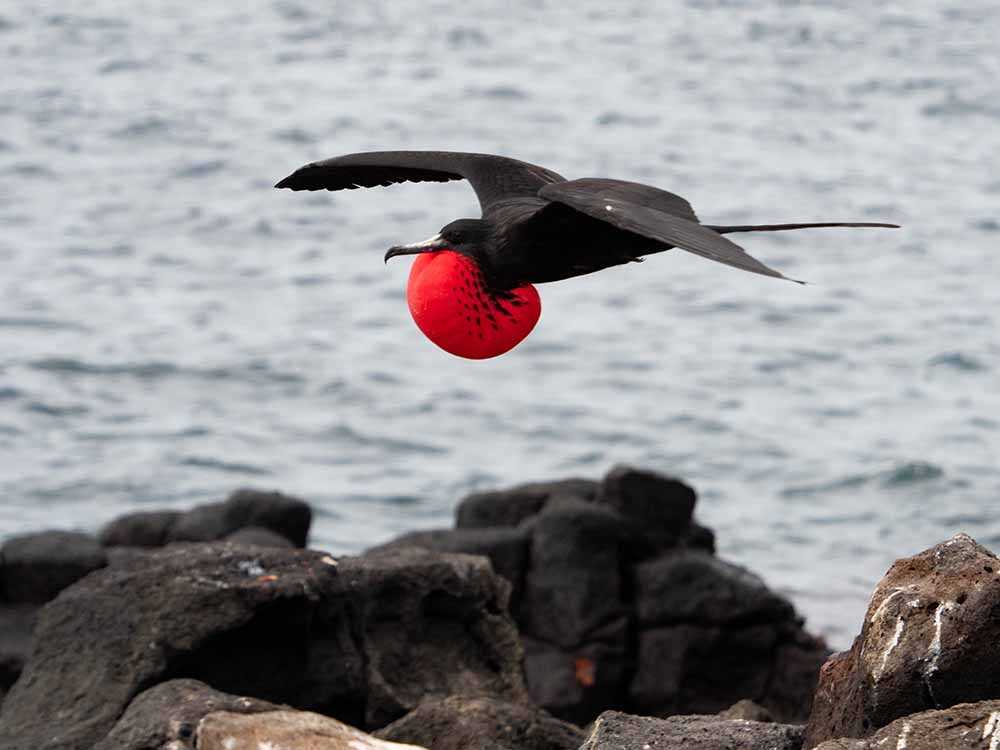This was a special day. We visited North Seymour Island, the only place where magnificent frigatebirds and blue-footed boobies both live, and it was breeding season! We got to see male frigatebirds showing off their red gular pouches to attract mates, and blue-footed boobies doing their sky-pointing courtship dance!
We also saw land iguanas basking in the early morning sun and looking for food. Some guarded their cactus trees, waiting for a prickly pear to fall off the tree. Cactuses are vital in this ecosystem, and they are the main source of food for the iguanas.
In the afternoon, we landed on Rábida Island, located in the center of the Galápagos archipelago. Here, we had the opportunity to explore the marine world and its awesome inhabitants, such as sea turtles, sea lions, marine iguanas, and brown pelicans. Later on, we walked along the red sand beach, a chance to photograph Galapagos sea lions and mockingbirds in a stunning landscape.








